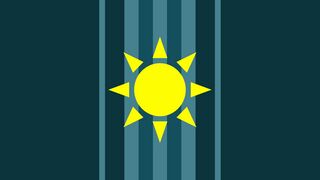New Altnavia (Pacifica): Difference between revisions
mNo edit summary |
|||
| Line 136: | Line 136: | ||
By the early 350s, the population grew to 340 people and the kingdom grew larger. No other ships had come. The people lived peacefully under the rule of a generous king. | By the early 350s, the population grew to 340 people and the kingdom grew larger. No other ships had come. The people lived peacefully under the rule of a generous king. | ||
By the year 379, the population had grown to 870. The kingdom now had people all over the island. Farming started in northern Nealta and western Malidsia, letting the people to get food without | By the year 379, the population had grown to 870. The kingdom now had people all over the island. Farming started in northern Nealta and western Malidsia, letting the people to get food without having to go into the jungles. The population reached 1000 and continued to grow in the year 387. | ||
No ships moved between Nealta Kingdom and the mainland until the 700s. The island was very peaceful for several centuries without major problems. The 40 people who first reached the islands are the start of the Nealta ethnic group, which has over 5.3 million people today. | No ships moved between Nealta Kingdom and the mainland until the 700s. The island was very peaceful for several centuries without major problems. The 40 people who first reached the islands are the start of the Nealta ethnic group, which has over 5.3 million people today. | ||
Revision as of 17:03, 17 September 2024
New Altnavia, officially The Democratic Republic of New Altnavia (Pur Ramaedtra Velisia lo Alisi Altineivio) is a unitary state located in northern Bailtem. It is bordered to the east by Andrendia, to the south by Amberholde and Kustannuksa and to the west by Dacian Federation and People’s Republic of San Marsico. The nation’s current leaders are President Christopher Semili Ideipi and Prime Minister James Caliderei Pelidi. The capital and largest city of the nation is Noveopolis.
The Democratic Republic of New Altnavia Pur Ramaedtra Velisia lo Alisi Altineivio | |
|---|---|
|
Flag | |
Motto: Together as one, we build a path to the better ‘neivio’ (peaceful seaside) | |
Anthem: The Light Over The East Horizon | |
| Capital | Noveopolis |
| Official languages | Pacicayan, Silivian and Austral |
| Ethnic groups | Pacicayan 55.2%
Silivian 29.8% Nealti 10.1% Other 4.9% |
| Government | |
• President | Christopher Semili Ideipi |
• Prime Minister | James Caliderei Pelidi |
| Area | |
• Total | 270,328 km2 (104,374 sq mi) |
| Population | |
• Census | 53,408,900 (2023.07) (18) |
• Density | 198/km2 (512.8/sq mi) |
| Currency | Viliceide (VCD) |
| Time zone | UTC +2 |
| Date format | YYYY/MM/DD |
| Driving side | right |
| Calling code | +174 |
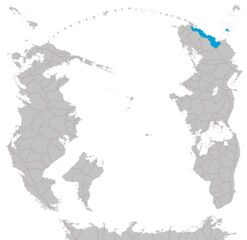 | |
The nation consists of 8 provinces on the mainland of the continent Bailtem and three islands. Most of the nation has a tropical climate. The current republic was founded in September 2022, a month after the former King Laleikiya (1911~2022) passed away with no successors. New Altnavia has a population of 53.4 million, making it the 18th most populous nation in the South Pacific. The official languages of New Altnavia are Pacicayan, Silivian and Austral with Pacicayan being the most well-known language throughout the nation. 95.1% of the people of the nation are from the three main ethnic groups, which are Pacicayan, Silivian and Nealti.

The Pacicayan people are native to the modern-day Sudu Capitalia, Greater Noveopolis, Ineopbi (pronounced ee-nay-yo-bee), Hurudeifa, Fipotalla and North Fipotalla. The Silivians are native to Nodeiso, Silivo and Viruidi Island while the Nealti are native to the region called New East Altnavia.
Etymology
The name ‘New Altnavia’ comes from the kingdom’s name that existed until 2022, which had the same territory as the current republic, called Altineivio Kingdom. In the name ‘Altineivio’, ‘alti’ means ‘beautiful’ in Silivian and ‘neivio’ means ‘peaceful seaside’ in Pacicayan.
History
Prehistory
Exactly when the first humans settled in the modern-day mainland New Altnavia is unknown. It is thought that the event happened 90-150 thousand years ago. The oldest artifacts were discovered along the Pacicaya River, Fipotalla River and Silivo River. Humans gathered to make small towns consisting of about 120 people on average. The small towns traded and fought with one another. These towns are not considered nations as they had a small number of people and didn’t have a proper government.
Early Bronze Age States (1887 BCE ~ 1610 BCE)
The ‘Early Bronze Age States’ refers to the nations that existed between 1887 BCE, when Decidilia was founded, and 1610 BCE, when the Great Deforestation ended.
The First Kingdoms
In the 1900s BCE, towns along the Pacicayan River started to either unite with each other or invade and annex one another. The Kingdom of Decidilia is said to have been founded along the Pacicayan River in 1887 BCE.
At similar times, similar things happened along the river banks of Silivo and Fipotalla. The Kingdom of Luxideis was founded along the Fipotalla River in 1863 BCE and the Kingdom of Servipilo was founded along the Silivo River in 1824 BCE. The three kingdoms continued to extend their borders, annexing small settlements around them.
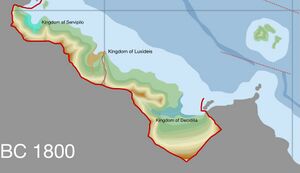
By 1800 BCE, the kingdoms had over 90% of the total population in mainland New Altnavia. They developed cultures, including their own scripts and architecture styles. The land between the nations was mostly taken up by dense rainforests and the forests blocked the kingdoms from extending their territory a lot. Moving through the forests was not easy. However, the kingdoms often traded with and helped one another in many ways and managed to have peaceful relations for several centuries. These few centuries are known as the most peaceful times in all of New Altnavian history.
The Great Deforestation and Territory Extension
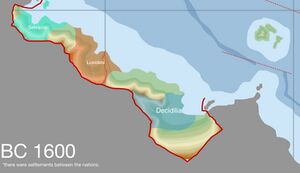
The three ancient kingdoms, Decidilia, Luxideis and Servipilo, grew a lot in population as small tribes between the kingdoms joined them and better farming methods were developed. The most populous, Decidilia is thought to have had over 120 thousand people, which is a lot considering the climate and size of the kingdom. Because of the growing population, more land was needed but the nations were surrounded by the ocean and rainforests. In 1730s BCE, mass deforestation started in modern day Ineopbi by Decidilians. This spread to other regions and other kingdoms and an incredible amount of trees were taken down. This event ended around 1610 BCE, and the kingdoms had grown by an immense amount.
Enneidi Era (1610 BCE ~ 1044 BCE)
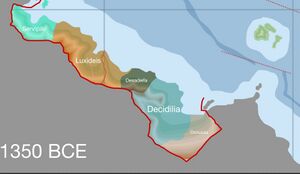
The Enneidi Era began as the Great Deforestation ended. Small deforestation events continued to happen. New nations, known as the Second Generation Bronze Age States were founded.
By 1350 BCE, the nations had control of all the current New Altnavian territory except for Nealta. The five states had peaceful relations for the first two centuries, but started to have wars with one another.
Desadeifa (1542 BCE ~ 1086 BCE)
Desadeifa was founded in modern day Hurudeifa in 1542 BCE by some tribes that lived in the region. At first, it was ruled by a king. However, in 1404 BCE, the king was overthrown and the first republic in the history of New Altnavia was founded. However, there are historians that claim that there was no republic and a new king ruled the nation.
The so-called republic fell in 1383 BCE, and Desadeifa became a kingdom again. Since about then, it had good relations with Decidilia. The two nations helped each other until 1102 BCE, when King Helideira became the king of Decidilia. He did not attack Desadeifa, but refused to continue the good relationship between the nations.
Desadeifa was invaded and conquered by the Kingdom of Luxideis in 1086 BCE.
Donuicia (1563 BCE ~ 1242 BCE)
Donuicia was founded in modern day Sudu Capitalia in 1563 BCE by local tribes and some Decidilians that were tired of the life in Decidilia. The nation grew quickly, absorbing nearby towns. It didn’t have good relations with Decidilia, but Donuicia managed to block Decidilia from annexing the nation in the wars between the two nations, which let Donuicia stay independent for a long time. Donuicia at last fell to Decidilian forces in 1242 BCE.
The Great Enneidi Wars (1067 BCE ~ 1044 BCE)
By 1086 BCE, only the original three kingdoms (Servipilo, Luxideis and Decidilia) existed. Desadeifa had been annexed by Luxideis and Donuicia had been annexed by Decidilia.
Relations between Servipilo and Luxideis were very bad. In the summer of 1067 BCE, Luxideis forces crossed the nation’s northern borders and invaded Servipilo. This event marked the start of the Great Enneidi Wars, which refer to the three wars that happened in the next 23 years.
For the first few months, Servipilo managed to block the massive army of Luxideis from taking its major cities. However, as time passed it grew harder and harder. At last, Servipilo asked Decidilia for help in 1066 BCE.
Decidilian forces invaded the southern part of Luxideis in 1065 BCE. Luxideis, which had most of its forces in the north, lost a lot of land in the south. Servipilo successfully had its first major victory in the war and started to reclaim the land it had lost. With Servipilo and Decidilia attacking at the same time, Luxideis grew weaker and requested a peace treaty in 1062 BCE. The treaty made Luxideis lose a lot of land to its two enemies.
Luxideis soon rebuilt its military. In the autumn of 1055 BCE, Luxideis invaded Decidilia to take control of the territory it had lost. During the first few weeks, Decidilia lost several times, letting Luxideis forces reach a town that was only 30 kilometers away from the Decidilian capital located in modern day Noveopolis. But Luxideis failed to continue, and Decidilian forces pushed Luxideis back to the north. Servipilo also invaded Luxideis in 1053 BCE, and Luxideis grew smaller and weaker. In the spring of 1052 BCE, the capital of Luxideis located in modern day Fipitelepolis was taken over by Decidilian and Servipilian forces and the King of Luxideis surrendered. Decidilia annexed Luxideis territory in the south of the Fipotalla River while Servipilo annexed the northern part. However, some government officials of Servipilo did not accept the border.
In 1047 BCE, the ‘Third Enneidi War’ started as Servipilo forces invaded Decidilia at night. Decidilia, which thought of Servipilo as an ally had not prepared for a war and lost in several battles. Servipilo took control of the entire modern day Fipotalla and started to attack Hurudeifa. But just two months after the start of the war, Decidilia started to win and Servipilo retreated to the north. The war went on for three years and ended in early 1044 BCE as Decidilian forces entered the Servipilian capital. Decidilia had united the mainland New Altnavia for the first time in history, but it only lasted for 7 months. Several rebels started to attack the government in late 1044 BCE, marking the end of the Enneidi Era.
Peleidi Era (1044 BCE ~ 342 BCE)
The Peleidi Era, also known as the Third Bronze Age Era, refers to the years between 1044 BCE and 342 BCE. 1044 BCE is the year when Decidilia united the mainland New Altnavia and soon was divided again and 342 BCE is when Later Luxideis fell and the Iron Age started.
Rebellion and the Division of Decidilia (1044 BCE ~ 1038 BCE)
Only seven months after Decidilia annexed Servipilo and became the first nation to unite the mainland New Altnavia, rebels rose from across the nation. Nations like Later Luxideis, New Servipilo and Ineodicia managed to build a strong nation and stayed independent while a few other nations like West Decidilia was annexed by Decidilia again. Most of the rebellions ended by the 1030s BCE and an era with wars happening very often started.
The Fall of Decidilia and The Rise of Later Luxideis
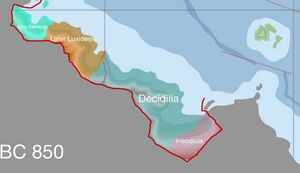
By 850 BCE, Decidilia had lost a lot of land and became weaker because of many wars, rebels and a very unstable government. Ineodicia, a nation built by former Donuician citizens grew larger and destroyed the southern regions of Decidilia. In the north, Later Luxideis had a very strong government and military. Later Luxideis continued to invade Decidilia and managed to annex the modern-day Fipotalla by 790 BCE.
In 748 BCE, rebels demanding lower taxes and a stronger government rose in various parts of Decidilia. In 746 BCE, Ineodicia, Later Luxideis and the Decidilian Rebels made an alliance and started to attack the Decidilian government together. The already weakened Decidilian government could not stop its enemies from extending their territories and the Decidilian Rebels founded the Kingdom of Deceipbi in 734 BCE.
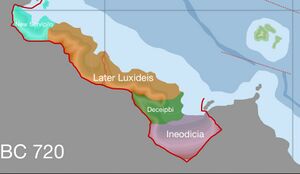
Later Luxideis gained the most land, doubling its territory. It lowered the taxes for its newly annexed regions, which helped Later Luxideis to easily govern the regions.
The three nations’ forces met in the western region of modern day Greater Noveopolis in 729 BCE. The united army had more than five times the size of the Decidilian army and had no trouble in attacking the remaining Decidilian territory. King Heilipio of Decidilia was caught and imprisoned by Ineodician soldiers in the spring of 728 BCE. This led to the surrender of Decidilia, which marked the end of the first kingdom of New Altnavian history.
The leaders of Later Luxideis, Deceipbi and Ineodicia met soon after the Decidilian surrender to discuss the new national borders and decided on the borders shown on the map above. The four nations, including New Servipilo had peaceful relations for several centuries.
Deceipbi-Ineodicia War (413 BCE)
In 415 BCE, King Kajeideiri became king of Ineodicia. Just two years later, the Deceipbi naval forces accidentally attacked and destroyed an Ineodician merchant ship heading to Later Luxideis, thinking that it was a pirate ship. Also, some Ineodician citizens were attacked by a few Deceipbi military members. Outraged by these events, King Kajeideiri declared war on Deceipbi shortly after.
Ineodicia had a stronger military than Deceipbi and soon took over parts of Deceipbi’s territory. But just a month after the start of the war, Later Luxideis sent its army to stop the war. With the help of Later Luxideis, Ineodicia and Deceipbi stopped the war. Thanks to this, peace continued in the region for another few decades.
Start of Iron Age in Later Luxideis
According to Ancient Pacicayan Kingdom Records written in the 200s AD, iron weapons were first produced in a large scale in Later Luxideis in the 390s BCE. It is believed that iron weapons and farming tools were first used by Later Luxideis citizens around that time. The technology was kept a secret until the fall of Later Luxideis.
The Fall of Later Luxideis
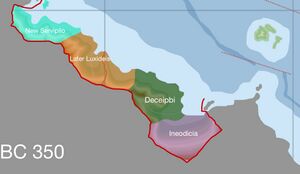
In the 360s BCE, Later Luxideis was getting unstable as the government weakened. The king of Later Luxideis did not care about governing the nation and also disliked the neighboring nations. This made the relations between Later Luxideis and the other nations turn bad.
In 354 BCE, New Servipilian officials visited Deceipbi and Ineodicia to ask for help in putting an end to Later Luxideis. Deceipbi, which didn’t like Later Luxideis agreed immediately, and Ineodicia agreed shortly after. In 352 BCE, the first war between Later Luxideis and the other nations began. Later Luxideis lost, losing a lot of land and resources to its enemies. A peace treaty was signed in 350 BCE.
After the war, Later Luxideis got weaker and rebellion happened in some parts of the nation. The New Servipilo - Deceipbi - Ineodicia army invaded Later Luxideis again in 344 BCE. At last, the capital of Later Luxideis was captured by New Servipilo in 342 BCE. This marked the end of Later Luxideis and the Peleidi Era.
Early Iron Age Kingdoms (342 BCE ~ 693 AD)
The early Iron Age Kingdoms refers to all the nations between 342 BCE and 693 AD.
Early Iron Age Chaos
As Later Luxideis was destroyed, the technology to make iron weapons spread throughout the region, marking the start of the New Altnavian Iron Age. After the big event, two centuries of chaos followed. Dozens of micro-nations were founded based on the new iron technology. Many rebellions happened in large nations. The many nations fought one another for two centuries until the 140s BCE, when the conflicts were settled and there were only four nations existing.
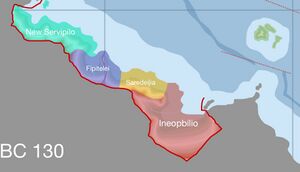
In the 200s BCE, the two nations Deceipbi and Ineodicia merged into Ineopbilio. Ineopbilio rose to become the strongest and most populous nation. In the north, New Servipilo stayed strong as the second most powerful nation. Ineopbilio and New Servipilo played a big role in bringing peace to the region. Nations that existed in modern-day Hurudeifa were united to become Saredeijia and the nations that existed in modern-day Fipotalla were united into Fipitelei.
Even after the chaos were settled in the 140s BCE, small conflicts continued to happen in Saredeijia and Fipitelei. However, they did not grow into a big war thanks to Ineopbilio and New Servipilo putting a stop to the conflicts. No large scale conflicts happened until 278 AD.
Chaos in the 3rd~4th Century (278 ~ 325)
There was a major drought in the 270s, leading to a massive famine in several parts of the region. This wasn’t solved easily, and it led to many people’s hate about their governments.
In 278, the chaos that would continue for almost five decades started as the king of Saredeijia was assassinated by a general. The general immediately took over the kingdom and started invading Ineopbilio, which was not prepared well because of the famine. In 280, Saredeijian forces invaded Fipitelei, which was weakened because of a king that did not care for his people. The king of Saredeijia was killed in his visit to newly conquered Fipitelei lands in 284, but the next king continued the conquering.
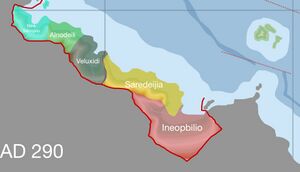
In 285, rebels took over the remaining parts of Fipitelei and founded the kingdom of Veluxidi. Veluxidi had good relations with Saredeijia for a long time. Veluxidi also annexed parts of New Servipilo.
In 287, rebels in the eastern part of New Servipilo founded Alnodeili and fought against the New Servipilo government. By 290, Alnodeili annexed half of New Servipilo. Alnodeili and Veluxidi did not have very good relations at first, but no wars happened until 311.
Alnodeili invaded New Servipilo again in 297 after 7 years of peace. New Servipilo was very weakened and Alnodeili took over almost all of New Servipilo in 302, forcing the remaining New Servipilo government officials to head to the island of Viruidi. Viruidi was annexed in 303, marking the end of New Servipilo.
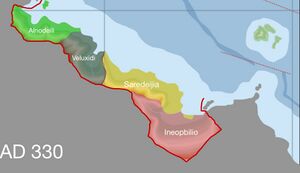
In 311, Veluxidi invaded Alnodeili with Saredeijian support. At first, Alnodeili lost in several battles, but didn’t lose much territory. Peace was achieved in 313, when the king of Veluxidi that led the war died. Veluxidi attacked Alnodeili again in 316 without Saredeijian support but could not advance a lot. The second war ended in 317.
Ineopbilio invaded Saredeijia in 322 to recover its lost territory. Ineopbilio managed to recover parts of its lost territory, but also ended up losing land in other areas to Saredeijia. Peace was achieved in 325 after Saredeijia took control of half of the Ineopbilian coast.
This marked the end of the five decade-long chaos.
Discovery of Nealta (344)

In 344, a Saredeijian merchant ship carrying about 60 people left what is now Port Ineopbi to never return. The ship was on its way to the northwest when it met a heavy storm. The captain was badly hurt and a passenger that was a former captain had to pilot the ship. However, the sky was too cloudy for several days. This made it hard for the new captain to navigate and ended up going to the northeast. Several days later, the remaining 40 people saw land that no one had ever been to before. The people started living on the southern coast of Nealta Island.
Two weeks later, another storm happened and another ship arrived, this time with 120 people on board. It was a ship sent by the Saredeijian government to search for the missing people. There were now 160 people on the island. There was no hope of returning, so the 160 people stayed on the island. The Kingdom of Nealta was founded soon, with the Saredeijian general who was the captain of the second ship as the king.
By the early 350s, the population grew to 340 people and the kingdom grew larger. No other ships had come. The people lived peacefully under the rule of a generous king.
By the year 379, the population had grown to 870. The kingdom now had people all over the island. Farming started in northern Nealta and western Malidsia, letting the people to get food without having to go into the jungles. The population reached 1000 and continued to grow in the year 387.
No ships moved between Nealta Kingdom and the mainland until the 700s. The island was very peaceful for several centuries without major problems. The 40 people who first reached the islands are the start of the Nealta ethnic group, which has over 5.3 million people today.
